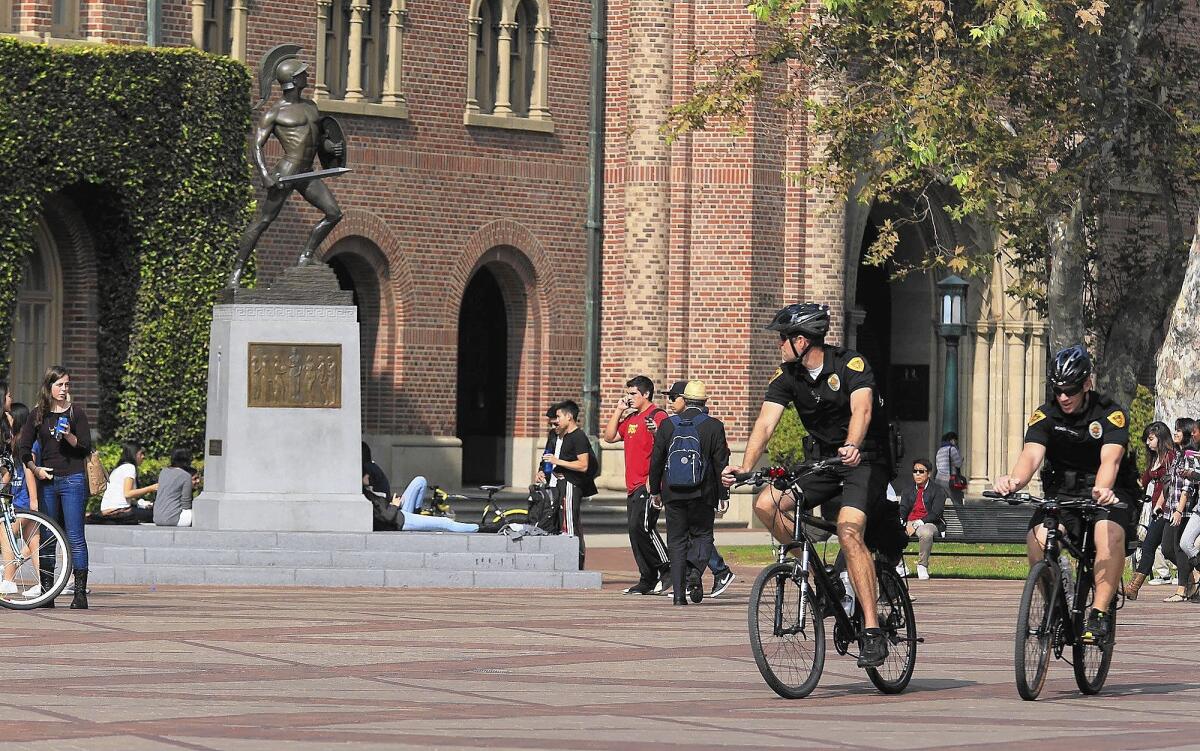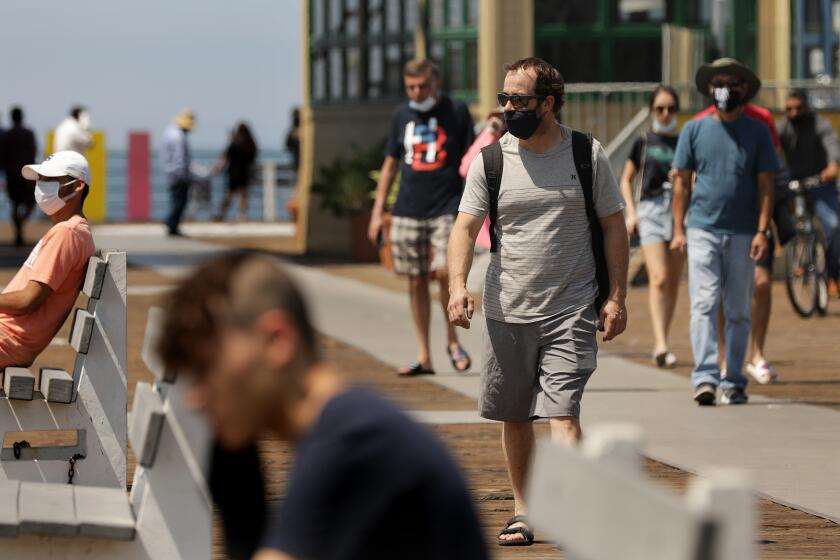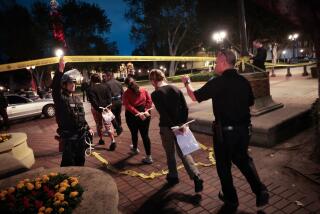Coronavirus outbreak at USC’s fraternity row leaves at least 40 people infected

- Share via
USC is dealing with an outbreak of the coronavirus spread across the university’s Greek row.
The school has detected around 40 positive COVID-19 cases involving individuals living on 28th Street, where many fraternity groups associated with the university are based, said Dr. Sarah Van Orman, USC’s chief student health officer.
“A significant number of the cases were associated with four fraternity houses,” Van Orman said. To date, around 150 USC students and employees have tested positive.
USC and other universities have adapted in an effort to keep students, staff and local communities safe during the pandemic. Many schools, including UCLA and USC, have moved the vast majority of fall semester classes online and canceled events; limited the availability of on-campus housing to decrease density; added mask, social-distancing and symptom-checking measures; and are regularly reporting infection data. Still, as students continue to return officially and unofficially, on-campus and off, universities face a daunting worry: Can the spread of COVID-19 at colleges be stopped?
That answer depends on the decisions individuals make, Van Orman said, pointing out that USC’s recent outbreaks occurred at off-campus spaces not controlled by the university.
“Unless all of us understand that right now our only tools are physical distancing and wearing masks, we’re going to continue to have devastation, not only in terms of the economy, our learning, our academics, our jobs, but people dying,” she said. “Each of us have to decide what we stand for. Frats need to do that as well.”
She said that although the outbreak affected fraternity houses, it wasn’t clear that the infections involved fraternity members, who often lease out rooms during the summer.
UCLA spokesman Steve Ritea agreed that the pandemic’s toll will depend on community members’ choices.
“If you have three or four of our students who are living together in an off-campus apartment, all we can do is give them our best recommendation and the best knowledge. They have to make those decisions from there,” he said. Students living in official UCLA dorms face certain health restrictions imposed by the school, he added.
Coronavirus outbreaks have occurred in fraternity spaces at universities across the country, including the University of Washington and UC Berkeley. Van Orman attributed the spread in such spaces to the increased household exposure that comes with congregate living situations and social gatherings.
“When we think about the population size that they expose, it can quickly become quite large,” Van Orman said.
The outbreak among USC fraternities is mostly over, she said. The school first reported 15 positive cases on 28th Street through a July 9 press release. Continued testing and aggressive contact tracing allowed the university to identify exposed individuals and new positives. Mandatory quarantining ordered by the Los Angeles County Department of Public Health helped stop the spread.
Men are less likely to wear masks. They are also dying of coronavirus at higher rates in L.A. County
Mayor Eric Garcetti said that men account for two-thirds of the virus deaths in L.A. County that have occurred outside of an institutional setting.
“We haven’t seen any more cases for the last week or so,” Van Orman said. The testing, tracing and quarantining are all parts of USC’s pandemic plan, which is laid out on the school’s website.
In the fall, outbreaks at USC could lead to more remote classes. Hotel space has been set aside for students infected in the future, Van Orman said. The university is encouraging undergraduates to not return, working to educate students about spread and is set to enforce strong policies blocking rule-breakers from the campus, she added. Keeping students from getting together in groups will play an important role in preventing future outbreaks.
“Gatherings are a huge issue. Whether that’s at a church or a fraternity, that’s what we’re seeing: People get together, and if you have 20 or 30 people in the room you can quickly have half of them infected in one gathering,” Van Orman said.
On Wednesday, UCLA’s coronavirus total was similar to USC’s. The university reported 153 individuals have tested positive and reported their diagnosis to the university since testing began. Fifty-two cases have been reported since June 15. Ritea said that the data include self-reported cases from out-of-state students and that the Westwood campus is not experiencing a COVID-19 outbreak. UCLA isn’t seeing abnormal spread involving conjugal living spaces, he added.
UCLA has its own COVID procedures written up online too. The intention that’s gone into preparing makes Ritea feel better about the school’s outlook.
“When you’re talking about a global pandemic where there’s no vaccine yet, I would never say that any of us feel good about any number of cases,” he said. “But what I do feel good about is that our leadership has taken this so seriously. There’s been so much thought and care and planning that goes into how we’re doing this.”
He noted, however, that the planning can only go so far.
“The best we can do is minimize the risk as much as we can,” Ritea said.
Both schools’ student populations are full of young people, who are typically hit less hard by the coronavirus. Van Orman said no one infected at USC has been hospitalized yet. But young people aren’t immune to the virus’ worst consequences, she added.
“We still see young, healthy people who contract the virus, who have severe disease, who are hospitalized and even die,” she said.
She added that a developing understanding of the virus’ long-term effects should concern young people, along with the fact that they can pass on the virus to more vulnerable people.
“They’re exposing their parents and their grandparents; they’re exposing the person that’s working in the store,” she said.
More to Read
Sign up for Essential California
The most important California stories and recommendations in your inbox every morning.
You may occasionally receive promotional content from the Los Angeles Times.












